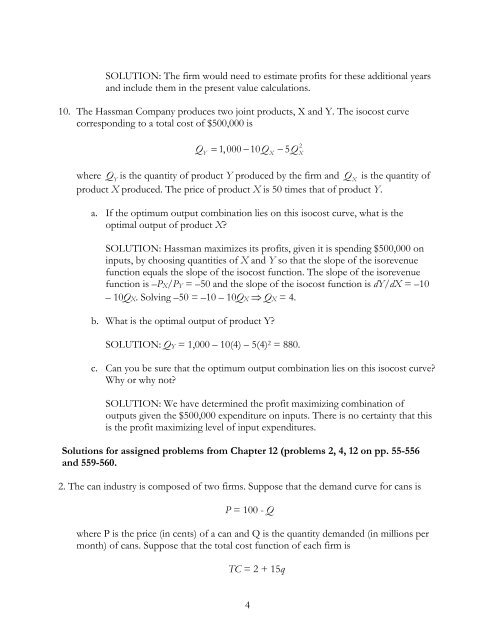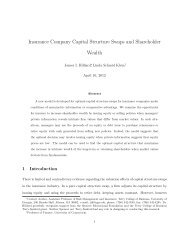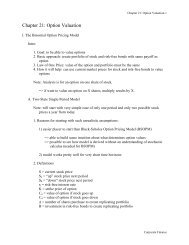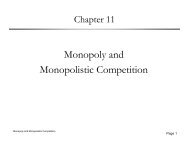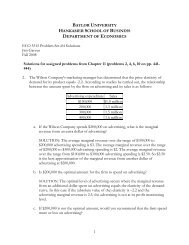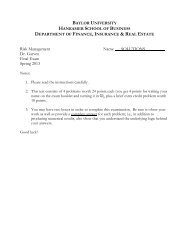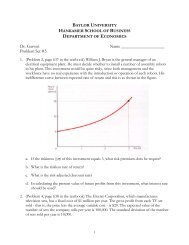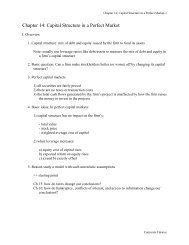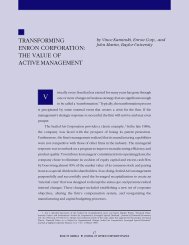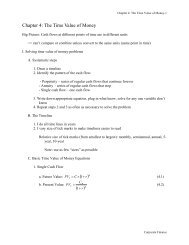Problem Set #4 Solutions - Baylor University
Problem Set #4 Solutions - Baylor University
Problem Set #4 Solutions - Baylor University
Create successful ePaper yourself
Turn your PDF publications into a flip-book with our unique Google optimized e-Paper software.
SOLUTION: The firm would need to estimate profits for these additional years<br />
and include them in the present value calculations.<br />
10. The Hassman Company produces two joint products, X and Y. The isocost curve<br />
corresponding to a total cost of $500,000 is<br />
Q = 1, 000 −10Q − 5 Q<br />
Y X<br />
2<br />
X<br />
where QY is the quantity of product Y produced by the firm and Q X is the quantity of<br />
product X produced. The price of product X is 50 times that of product Y.<br />
a. If the optimum output combination lies on this isocost curve, what is the<br />
optimal output of product X?<br />
SOLUTION: Hassman maximizes its profits, given it is spending $500,000 on<br />
inputs, by choosing quantities of X and Y so that the slope of the isorevenue<br />
function equals the slope of the isocost function. The slope of the isorevenue<br />
function is –PX/PY = –50 and the slope of the isocost function is dY/dX = –10<br />
– 10QX. Solving –50 = –10 – 10QX ⇒ QX = 4.<br />
b. What is the optimal output of product Y?<br />
SOLUTION: QY = 1,000 – 10(4) – 5(4) 2 = 880.<br />
c. Can you be sure that the optimum output combination lies on this isocost curve?<br />
Why or why not?<br />
SOLUTION: We have determined the profit maximizing combination of<br />
outputs given the $500,000 expenditure on inputs. There is no certainty that this<br />
is the profit maximizing level of input expenditures.<br />
<strong>Solutions</strong> for assigned problems from Chapter 12 (problems 2, 4, 12 on pp. 55-556<br />
and 559-560.<br />
2. The can industry is composed of two firms. Suppose that the demand curve for cans is<br />
P = 100 - Q<br />
where P is the price (in cents) of a can and Q is the quantity demanded (in millions per<br />
month) of cans. Suppose that the total cost function of each firm is<br />
TC = 2 + 15q<br />
4


